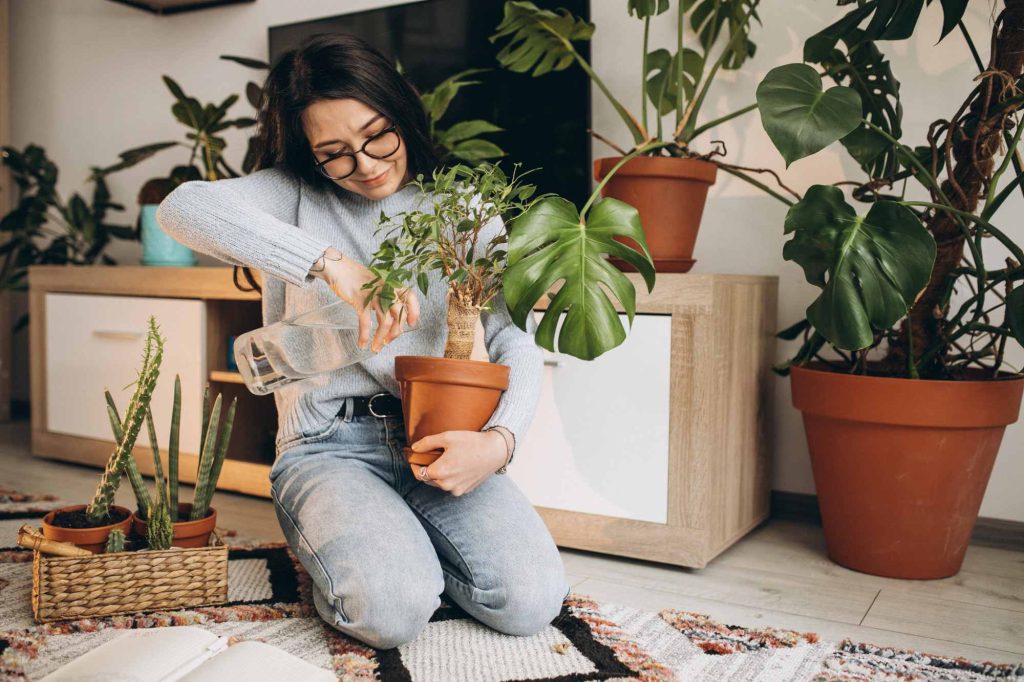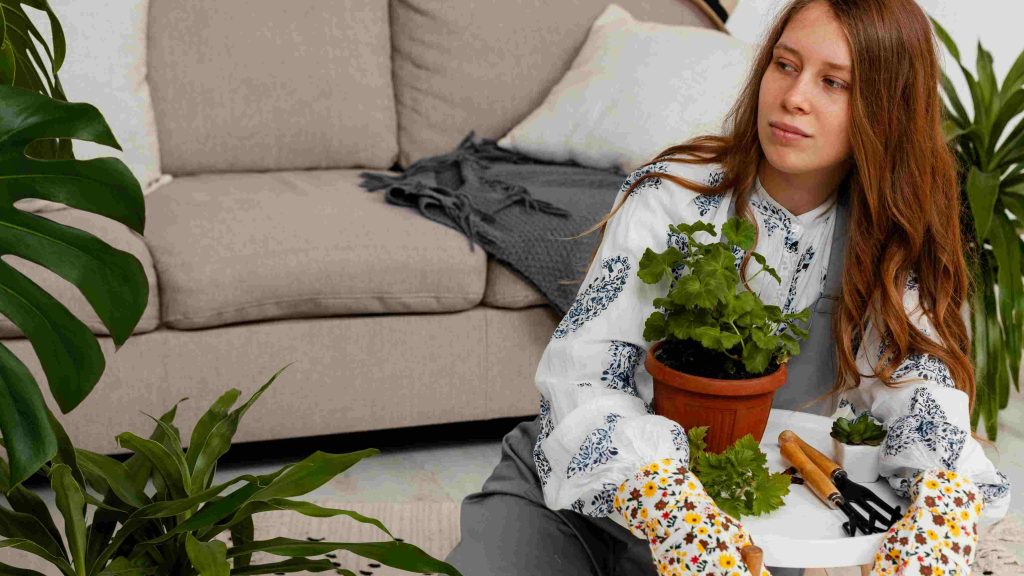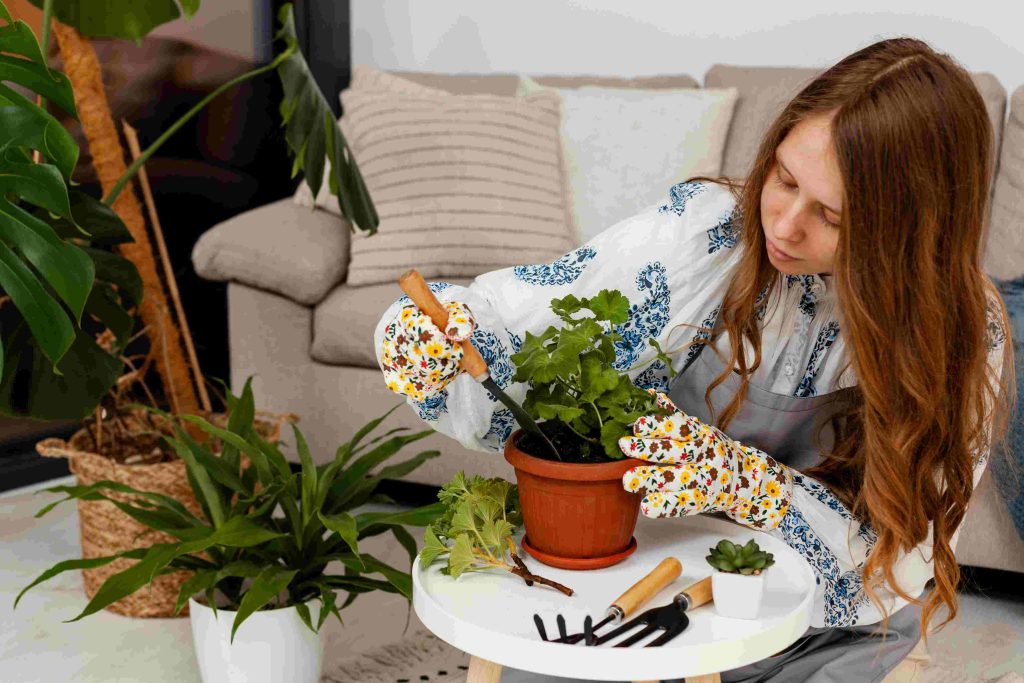Winter is a tough time for houseplants. When the cold months arrive, I always notice my plants struggling. Leaves turn yellow, growth slows down, and some plants even start to droop. It took me a while to understand why this happens. The dry air, low light, and temperature changes make winter really hard for houseplants.
I used to lose a few plants every winter, but now I know how to fix these problems. Over time, I learned simple tricks to keep my plants healthy, even when it’s freezing outside. I adjust watering, move plants to better spots, and use a few easy care tips to help them survive.
If your plants also struggle in winter, don’t worry! I’ll share common winter problems for houseplants and how to fix them. These simple solutions will help your plants stay strong until spring. Let’s get started!

Fix Your Common Winter Problems for Houseplants Now!
Winter can be tough on houseplants, and I’ve learned this the hard way. The cold air, dry heat, and low sunlight create many challenges. Over the years, I have faced several issues, but I have found simple fixes. Here is a discussion of Common Winter Problems for Houseplants and how to fix them.
1. Dry Air Causes Brown Leaf Tips
During winter, indoor air becomes dry, making plant leaves turn brown. I notice this problem mostly in plants that love humidity, like ferns and Calatheas. The dry air makes their leaf edges crispy and brown. If not fixed, the whole leaf can die.
To fix this, I take a few simple steps:
- Use a humidifier: I place a humidifier near my plants to add moisture.
- Misting: I mist my plants daily with water to keep them hydrated.
- Pebble Tray: I put a tray with pebbles and water under the plant. As the water evaporates, it adds humidity.
- Group Plants Together: Plants release moisture, so keeping them close increases humidity.
I check my plants often to see if the leaves feel dry. If they do, I increase humidity until they look healthy again. These methods help keep my plants happy during winter.
2. Cold Drafts Make Leaves Drop
Cold air from windows and doors can shock plants, making them drop leaves. I once placed my Fiddle Leaf Fig near a window, and it lost almost all its leaves! Some plants, like tropical ones, are more sensitive than others.
To prevent this, I follow these steps:
- Move plants away from cold windows and doors.
- Use curtains or blinds to block drafts.
- Check window seals and close any gaps.
- Keep plants at least a few feet from outside walls.
I also check my room temperature to make sure it’s warm enough. Most houseplants prefer temperatures above 60°F. If my plants still lose leaves, I trim the dead ones and wait. Usually, new leaves grow back when the weather warms up.
3. Overwatering Leads to Root Rot
In winter, plants don’t grow as fast, so they need less water. I used to water my plants the same way year-round, but I soon learned this causes root rot. The cold air slows down the plant’s water use, leaving the soil too wet.
To avoid this, I follow these steps:
- Check the soil before watering. If the top two inches are dry, then I water.
- Use pots with drainage holes to let extra water escape.
- Empty saucers after watering to prevent standing water.
- Reduce watering frequency. Most plants need water once every two weeks in winter.
If I notice yellowing leaves or a bad smell from the soil, I know the roots may be rotting. I remove the plant from its pot, cut off any mushy roots, and repot in fresh soil. Since learning this, my plants have stayed much healthier.
4. Low Light Slows Growth and Fades Leaves
Shorter days mean less sunlight, and this can weaken plants. My pothos used to grow fast in summer but barely grew in winter. Some plants even lose their color when they don’t get enough light.
To fix this, I do the following:
- Move plants closer to windows to get the most daylight.
- Rotate plants weekly so all sides get light.
- Use grow lights if natural light is too low.
- Clean leaves with a damp cloth so they absorb more light.
I also avoid placing plants in dark corners, where they struggle to survive. Since using grow lights, my plants have stayed green and healthy, even in winter.
5. Temperature Changes Stress Plants
Indoor temperatures change a lot in winter. Heaters turn on and off, making rooms too hot or too cold. Plants don’t like these sudden changes, and they react by wilting or dropping leaves.
To keep my plants stable, I follow these tips:
- Keep plants away from radiators and heating vents.
- Avoid placing plants near doors that open to cold air.
- Use a thermometer to check room temperature often.
- Set the thermostat to a steady temperature, around 65-75°F.
I also water my plants with room-temperature water instead of cold tap water. Cold water can shock the roots, especially in winter. Keeping a stable environment has helped my plants thrive.
6. Pests Increase Due to Indoor Heating
Winter might seem pest-free, but I’ve noticed more bugs indoors. Warm, dry air makes spider mites, mealybugs, and fungus gnats appear. They hide under leaves and suck plant juices, making leaves yellow and weak.
To get rid of them, I do the following:
- Check leaves weekly for small dots or webbing.
- Wipe leaves with soapy water to kill bugs.
- Spray neem oil to prevent infestations.
- Use sticky traps for fungus gnats near the soil.
If pests get too bad, I isolate the affected plant to protect others. Since I started inspecting my plants weekly, I’ve had fewer pest problems.
7. Fertilizing Too Much Causes Leaf Burn
In summer, I fertilize my plants often because they grow fast. But in winter, they rest, and too much fertilizer can burn their leaves. I used to think more fertilizer meant better growth, but I learned the hard way!
Now, I follow these rules:
- Stop fertilizing from late fall to early spring.
- Use diluted fertilizer if a plant still needs nutrients.
- Flush out old fertilizer by watering the soil deeply once a month.
Since I stopped over-fertilizing, my plants have had fewer brown leaf tips and healthier roots. They start growing strong again in spring when I resume feeding them.

Tips for Keeping Houseplants Healthy in Winter
Winter can be tough for houseplants. The cold air, dry heat, and low light make it harder for them to thrive. I’ve learned a few tricks to keep my plants happy and healthy during the colder months. These simple steps help them survive and even grow.
1. Adjusting Watering to Avoid Overwatering
Winter changes how my plants drink water. The cold makes them grow slower, so they need less water. In the past, I watered my plants too much and saw yellow leaves. Now, I always check the soil before watering. I stick my finger one inch deep. If it feels dry, I water it lightly. If it’s still moist, I wait. I also use room-temperature water to avoid shocking the roots. Cold water can stress them. Overwatering is dangerous because it causes root rot.
Once, I lost a plant because I kept the soil too wet. Now, I use pots with drainage holes to keep roots dry. I also empty the saucers under pots so no water sits there. In winter, I water only when needed, usually once every two weeks. This method keeps my plants happy. I learned that it’s better to be underwater than overwater. Dry soil is easier to fix than rotting roots. My plants stay green and fresh all winter because I watch how much water they need. Checking the soil and using the right amount of water keeps them healthy.
2. Providing Enough Light During Shorter Days
Winter days are short, and my plants get less sunlight. At first, my plants became weak and stretched toward the window. I realized they weren’t getting enough light. So, I moved them closer to windows with the most sunlight. South-facing windows work best for me. They get the most light during winter. I clean the windows regularly so dust doesn’t block the light. I also turn my plants every few days to help all sides get light.
Some rooms don’t have enough natural light. For those areas, I use grow lights. These lights give my plants the energy they need. I turn them on for about 10-12 hours daily. This keeps my plants from becoming weak. Once, I lost a plant because it was too far from light. Now, I know better. I also avoid placing plants too close to cold windows.
The cold air can damage the leaves. By keeping my plants near light sources but away from drafts, they stay strong. Adjusting light levels is important in winter. When I make sure my plants get enough light, they grow healthy and green.
3. Keeping the Air Moist for Happy Leaves
Winter air inside my home gets dry because of heaters. My plants suffer when the air is too dry. Their leaves turn brown, and some start curling. At first, I didn’t understand why this was happening. Then, I learned that most houseplants love humidity. To fix this, I mist my plants every few days with a spray bottle. This adds moisture to the leaves.
I also group my plants together. When plants are close, they create a small humid environment. Another trick I use is placing a tray of water near my plants. As the water evaporates, it adds moisture to the air. For my most sensitive plants, I use a humidifier.
I keep the humidity level around 40-50%. My plants look healthier when the air is not too dry. Before using these tricks, I saw crispy leaves and slow growth. Now, my plants stay fresh and strong all winter. Keeping the air moist helps them survive cold months. A little extra care makes a big difference.
4. Keeping My Plants Away from Heat Sources
I used to put my plants near radiators and heating vents. I thought they needed warmth, but I was wrong. The hot air dried out the leaves and made them weak. I learned that direct heat is bad for plants. Now, I keep them at a safe distance from heaters. I place them in areas where the temperature stays steady. My plants do best in rooms between 60-70°F. Sudden temperature changes can stress them.
I also avoid putting them near doors that open often. Cold drafts can shock them and cause leaf drop. Once, I placed a plant near a heater, and its leaves curled up. I moved it away, and it recovered. Now, I check my home for heat sources before placing plants. If a room gets too warm, I move my plants somewhere cooler. I also use curtains to block cold air at night. Protecting my plants from extreme temperatures keeps them healthy. A stable environment helps them grow well.
5. Reducing Fertilizer to Match Slower Growth
In winter, plants don’t grow as fast as in summer. I used to feed my plants the same way all year. However, I noticed they didn’t absorb fertilizer well in winter. This caused a buildup in the soil, which hurt the roots. Now, I reduce feeding during winter months. Most of my plants don’t need fertilizer from November to February. If a plant still grows a little, I give it a weak dose once a month. I use a diluted liquid fertilizer to avoid overfeeding. Too much fertilizer in winter can burn the roots. I also flush the soil every few months by watering deeply.
This removes any extra fertilizer from before. When spring arrives, I slowly increase feeding again. By adjusting fertilizer use, my plants stay healthy. Before, I saw weak leaves and slow growth because of extra nutrients. Now, I understand that plants need fewer nutrients in winter. Giving them only what they need keeps them strong. Less is better when plants are resting.
6. Dusting Leaves for Better Growth
I never thought dust could harm my plants, but it does. Dust blocks sunlight and makes it harder for leaves to breathe. I noticed my plants weren’t as green and fresh. Then, I realized they had a layer of dust on them. Now, I clean my plants’ leaves regularly. I use a damp cloth to wipe each leaf gently. For small plants, I rinse them under lukewarm water. If a plant has fuzzy leaves, I use a soft brush instead. This helps them absorb more light.
I also check under the leaves for pests while cleaning. Dusting my plants makes a big difference. Before, my plants looked dull and weak. After I started cleaning them, they became brighter and healthier. Now, I make leaf cleaning a habit. I do it every two weeks in winter. A little effort keeps my plants strong and beautiful.
7. Choosing the Right Spot for Each Plant
In winter, I pay attention to where I place my plants. Some of them like bright light, while others prefer shade. I made mistakes before by keeping all my plants in the same spot. Some got too much light, and others didn’t get enough. Now, I check the light needs of each plant. I keep my succulents and cacti near sunny windows. My ferns and pothos do better in lower light. I also make sure no plant is near a cold draft.
Once, I lost a plant because it was too close to a window. Now, I move plants away from cold glass during freezing nights. Finding the right spot for each plant helps them survive winter. It takes a little time, but it makes a big difference. My plants stay happy because they are in the right place.
8. Watching for Pests That Hide in Winter
Pests love hiding in warm homes during winter. I once had a spider mite problem because I didn’t check my plants often. Now, I inspect my plants every week. I look under the leaves and check the soil. If I see small bugs or sticky spots, I act fast. I wipe the leaves with soapy water or neem oil. If the problem is big, I isolate the plant.
I also avoid bringing in new plants without checking them first. Pests spread fast, so I stay alert. Before, I ignored small bugs, and they damaged my plants. Now, I know early action is the best solution. Keeping an eye on pests helps my plants stay healthy. A quick check each week saves them from trouble. My plants are safer because I don’t let pests take over.

Final Thoughts
Winter brings many challenges for houseplants, but simple changes make a big difference. By adjusting watering, light, humidity, and temperature, I keep my plants happy all season. I check my plants regularly and fix problems before they get worse.
Taking care of houseplants in winter may seem hard, but it’s rewarding. When spring arrives, my plants are still strong and ready to grow. If you follow these tips, your plants will survive and thrive, just like mine!
FAQ
How to fix yellow leaves on houseplants in winter
Move plants to brighter spots or use a grow light. Water less often and check for pests or nutrient problems.
Why are my houseplants dropping leaves in winter?
Cold air, dry heat, or sudden moves can cause leaf loss. Keep plants warm, away from drafts, and water them properly.
How to care for houseplants with low light in winter
Place them near east-facing windows or use grow lights. Choose low-light plants and avoid overwatering to prevent rot.
How to prevent root rot in winter houseplants
Let the soil dry slightly before watering to avoid soggy roots. Use well-draining soil and pots with drainage holes.
Houseplant humidity solutions for winter
Mist leaves, use a humidifier, or group plants together. Placing water trays near plants also increases moisture.


